Hotels in Kardjali
Perpericon
The earliest traces of human civilization discovered so far at Perperikon were dated to the late Neolithic Period, 6th-5th millennium BC. However, Perperikon was not yet a settled village but a rock of worship.
Next came the Eneolithic Period (or the Copper Age). Fragments of pottery dated to the late 5th - early 4th millennium B.C. were found.
What had gradually become an inhabited rock complex continued to develop during the Bronze Age. By the end of the Bronze Age Perperikon had become a major place of worship. Very interesting late Bronze Age pottery was found at Perperikon in 2002, including several well-preserved vessels: small cups and larger beakers with characteristic curved handles.
A system of religious beliefs did not emerge until the early Iron Age, 11th-6th century BC, a period represented as well by the pottery found at Perperikon. Unlike the ancient Greek mythology, however, which developed at the same time, Orphism, the Thracian system of religious and philosophical beliefs is virtually unknown. Dionysus and Orpheus undoubtedly stemmed from that tradition but were a much later development.
The latest archaeological excavations at Perperikon revealed a site almost literally described by the ancient authors as the Temple of Dionysus in Mount Rhodope.
In 45 AD, Thrace was conquered by the Romans. In the Balkans, the process of Romanisation, which went on throughout the vast empire, meant the fusion of the ancient Hellenic and Thracian traditions with the new trends introduced by the conquerors. This development was particularly pronounced at Perperikon, where during the 1st-4th century AD, the sacred structures carved in the rock took on a distinct Classical character.
Perperikon comprises four elements: the citadel, an acropolis at the top of the hill; a palace or temple immediately beneath the acropolis and facing southeast; and two outer cities, one on the northern and one on the southern slope of the hill. So far, no archaeological research has been done of the two outer cities but terrain observations indicate that they had streets and secular and religious buildings carved in the rock. A host of villages flocked at the foot of the hill and the fertile river valley was densely inhabited throughout the period of Roman rule. The hilltop was protected by the acropolis whose walls are 8 and a half feet thick. The citadel had probably been built earlier but the Romans renovated it and enhanced the fortifications.
In the late Roman period, Perperikon's prosperity was overshadowed by strife and upheaval in the Empire. In the southern Balkans, the 4th century saw the Goths wreak havoc and devastation in the land.
Perperikon was captured and burned by the invaders. Very soon however, in the 5th-6th century, the city rose from its ashes as the eastern half of the Roman Empire (Byzantium) regained its lost possessions, particularly so under Justinian I (527-565). The same emperor commissioned colossal construction works restoring and redeveloping the ancient cities.
The riches hidden in the Eastern Rhodope had attracted the Bulgars since the late 7th century, when they first settled on the plain between the Danube and the Balkan Mountains to form the kernel of what was to become the first Bulgarian empire. Their expansionist ambitions were spurred on by the local population which, since the late 6th century, had been strongly permeated by Slavic elements. Indeed, contemporary Byzantine chroniclers claimed that the Bulgars' raids on the Rhodope were successful because the local tribes gave them their support.
The Eastern Rhodope were finally conquered by the second Bulgarian empire soon after the brothers Asen and Peter, the first Bulgarian rulers of the House of Asen (1185-1280), launched a revolt to throw off Byzantine sovereignty.
During the next two centuries (13th c. and 14th c.) the Bulgars managed to conquer the fortress of Perpericon several times but the Byzantines recaptured it. At the end of the 14th c. the Eastern Rhodope, and the second Bulgarian empire, fell to the Ottoman Turks, who were overrunning the Balkans from the south. Perperikon and the other fortresses were raised to the ground and sank into final oblivion.
Perpericon is situated 14 km from the town of Kardjali. The road to the hill is signed and well-maintained. Only the last part of it is somewhat difficult because it is not asphalted. At the foot of the hill you will meet people who will offer you a map of the place. It is cheap (4 lv) and you'd better buy one because there aren’t any signs for orientation in the stone complex.
The Stone Passage is built between 7-meter-high rocks. A strong stone wall will appear before you at the end of the passage. This is the fortification wall of the palace. There is a small court behind the remnants of the wall. It was a strategical place for attacking invaders. Once a double gate leaded to the court and another one leaded into the fortress. As you step inside the inner court you will be stunned by the magnificence of the palace. It is huge and all built of stone blocks. Some rooms are even carved in the rocks. More than 50 rooms with preserved stone doorsteps were found from west to east. A massive throne with footstool and armrests is carved in the rock at the northern wall of the palace court.
Lining the eastern, the western and the northern sides of the court are dozens of bigger and smaller chambers, passageways and stairwells. Only the ground floor survives as it was entirely carved in the rock. The compound has an area of 170,000 sq. ft and walls rise up to 12-15 ft. To build it, hundreds of thousand of cubic metres of rock must have been moved: a giant effort comparable to that of building the Egyptian pyramids.
Five stairs lead to the Great Hall in which marvelous ceremonies took place. The enormous 30-meter-long hall was carved in the rock in its western part. Its wooden floor in the eastern part was supported by two massive stone walls.
On the lower level you can see a small tomb with sarcophagi where ancient rulers and priests were buried. There is a big tomb in the complex as well. It was also used for the burial of important people. Unfortunately both tombs were looted in the past and there are no any precious objects left in them.
The Shrine of Dionysus is an impressive round hall at the western end of the fortress. The hall was obviously roofless because there are no niches for wooden beams in the walls. A big round stone altar is rising right at the centre of the hall. The Thracian priests carried out their rituals in the shrine, spilled sacred wine on the altar, made fire and predicted the future by the height of the smoke which was rising to the sky. The prophecy that Alexander the Great would conquer the world was made in this shrine. Mystic rituals connected with the cult of Dionisius and Orphism took place here.
The Acropolis was a stronghold which once protected the inhabitants of the sacred place. Carved in the rock in the eastern part of the Acropolis is a large basilica-planned structure. Archaeological research suggests that it was a pagan temple transformed into a Christian church. Two gates of the acropolis have been unearthed so far. One leads into the citadel from the west and is guarded by a rectangular barbican; the other, opening onto the south, was discovered in 2002 and is particularly important because it leads to the palace.
As you proceed along the path towards the citadel you will see a water cistern which was also carved in the rock. There are two such cisterns in Perperikon and archaeologists think that there was even a primitive water-supply system made of clay tubes. From here you can see the northern slope where a great number of small altars were found. They were used either for blood sacrifice or for the production of sacred wine.
Finally you will reach the tower - it is well-preserved and rises up in the sky as a symbol of the power and the glory of Perperikon.
If you decsend along the path on the northern slope of the Acropolis you will find a large stone wine-press. It consists of three stone vessels in which grapes was pressed and sacred wine was made. It was used for the rituals were connected with the cult of Dionysus and Orphism.
In the valley beneath the fortress the remains of a mediaeval monastery were discovered, which according to existing data had been an important religious and military centre.
Other places of interest in Kardjali
Hotels in Kardjali
Places to go in Kardjali
Deals & discounts in Kardjali
News from Kardjali
- Influx of tourists in Perperikon and Tatul
- Bulgarian and Dutch joint project to develop tourism in Kardzhali
- Bulgaria Thracian City of Perperikon with EUR 2,6 M Tourist Center
- Grandious construction in Kardjali
- Famous Bulgarian Perperikon and Greek Dimotika to become one tourism destination
- The ancient Thracian city of Perperikon
- New Road Leads to Perpericon
- Irishmen and Frenchmen Visit Perperikon
- Ambassadors Become Citizens of Perpericon
- National Geographic Presents Bulgaria
- Walking Paths to be Built in Perpericon
- Church Pulpit Unearthed in Perperikon
 Member of:
Member of:




















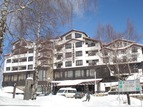
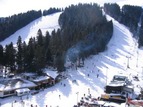

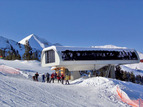
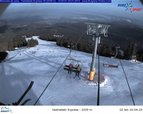
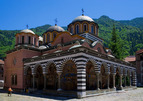
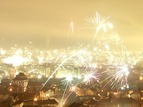


 Touroperator
Touroperator
